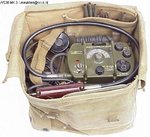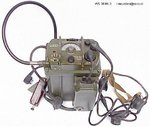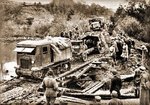parsifal
Colonel
Parsifal,
Did you read about the "Dorette" ? This was a squad level radio. Here it is again:
15W.S.E.a transmitter and receiver, German WWII, WW2
Now how does that compare to the "Handie Talkie" ?
I believe the FallschirmJaeger GebirgsJaeger were equipped with this piece at squad level. I'm not sure enough were made to equip the Wehrmacht Waffen SS though, so they were relying on the Torn.Fu.d 2 and the like at Companie level mostl likely. But so far I've seen no data to suggest that the Western Allies were equipped with more radios, or that they were equipped at squad level.
I agree that this "Dorette" was small enough to be a squad level radio, but it was not built until October 1944, and we have no information on production numbers or distribution. Also the information provided in the link is extremely sketchy so I cannot make any real comparison.
What would establish the German scale of distribution would be some figures on production of the various types. The Allies produced enough radios to distribute them down to squad level......just two types selected (as a sample) from perhaps a dozen used yields a production run of 50000 for the SCR-300 and 150000 for the SCR-536. These numbers suggest a very wide distribution of radios , down to squad level (fairly easily) for most of the war.
What we need is the production figures for the German sets.....



